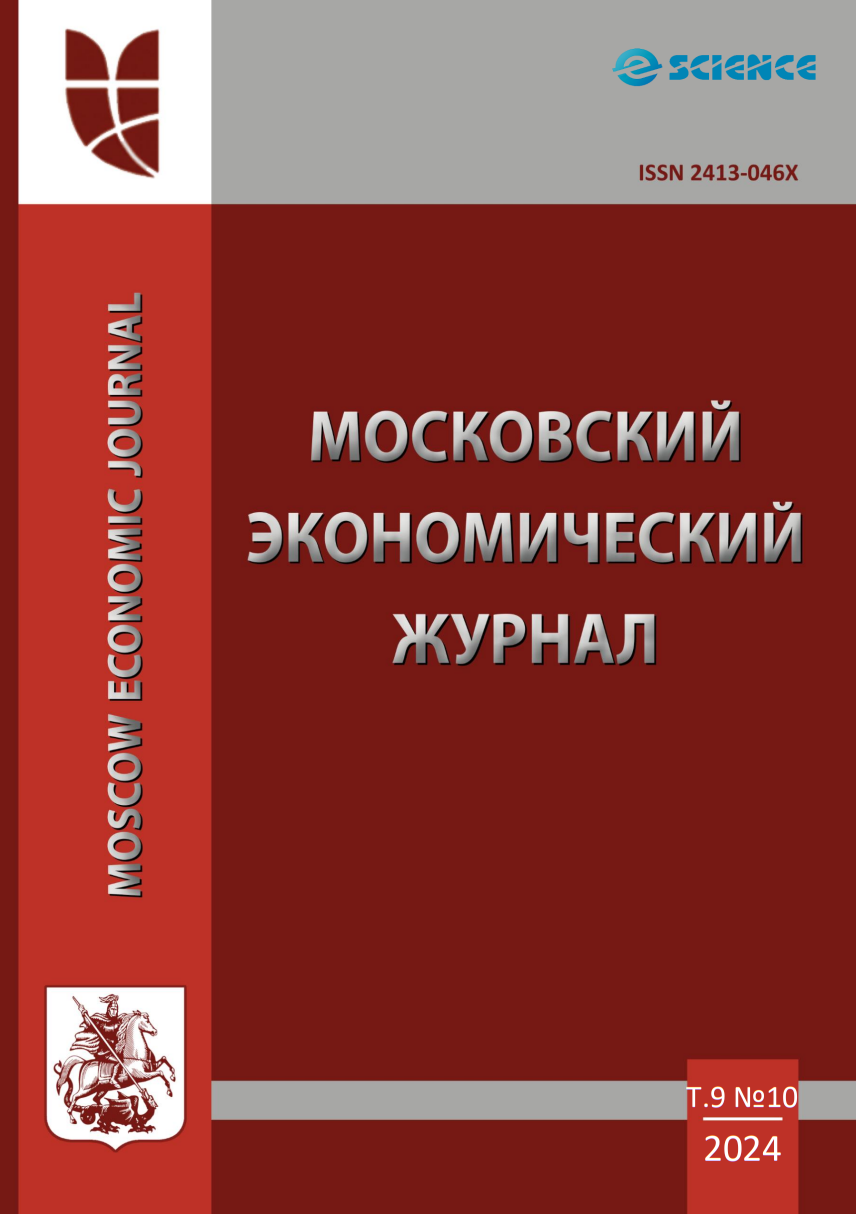from 01.01.2015 until now
Mytischi, Moscow, Russian Federation
UDC 634.8
UDC 332.3
In the Russian Federation, grape plantings are concentrated mainly in the North Caucasus and Southern Federal Districts. Over the past decade, there has been a tendency to increase the area of grape plantations and the gross harvest of berries. At the same time, the largest collection is made in the Krasnodar Region - 208-302 thousand tons, which is 30-35% of the total gross collection, in the Republic of Dagestan - 178-269 thousand tons (28-32%) and in the Republic of Crimea - 80- 131 thousand tons (12-16%). The increase in gross harvest over the last decade is associated with a fairly high level of agricultural technology, the beginning of fruiting of new grape plantations and relatively high yields (more than 10500 kg/ha). The main problems of sustainable development of this industry are the insufficient range of adaptive varieties of local selection with high productivity and resistance to adverse weather conditions and pathogenic microorganisms, as well as a shortage of high-quality planting material. The creation and organization of a network of grape nurseries will allow the development of fallow grape-suitable lands, carry out measures to rejuvenate ampelocenoses and will provide high potential for the development of the industry in Russia. The implementation of the Long-term program for the development of viticulture and winemaking in the Russian Federation contributes to solving priority tasks of import substitution and bringing Russian viticulture products to a global competitive level. The results of reconnaissance field surveys of the vineyards of the Anapa-Taman natural and climatic zone showed that in order to increase the productivity of ampelocenoses on the chernozems of southern slightly leached heavy loamy, as well as weakly and medium-calcareous heavy loamy and clay, it is necessary to carry out a complex of agrotechnical and reclamation measures, including reclamation plowing and chemical reclamation.
viticulture, grape plantations, area, yield, natural and climatic zones, soil cover, land reclamation
1. Smirnov K.V., Maltabar L.M., Radzhabov A.K., Matuzok N.V., Troshin L.P. Vinogradarstvo. M.: FGBNU «Rosinformagroteh», 2017, 487 s.
2. Stroev V.V., Magomedov M.D., Alekseycheva E.Yu. Razvitie vinogradarstva i vinodeliya v regionah Rossiyskoy Federacii. Upravlenie. 2023; T. 11. (2): 88–94. DOI:https://doi.org/10.26425/2309-3633-2023-11-2-88-94
3. Korolev S.V. Sud'ba vinogradnikov vo vremya antialkogol'noy kampanii 1985–1988 gg. v SSSR (na primere Kryma). Uchenye zapiski Krymskogo Federal'nogo universiteta imeni V.I. Vernadskogo. Seriya «Istoricheskie nauki». 2023; Tom 9(75), (1):38-51.
4. Federal'naya sluzhba gosudarstvennoy statistiki Rossii. https://rosstat.gov.ru/compendium/document/13277
5. https://rg.ru/2021/12/28/reg-ufo/ploshchadi-vinogradnikov-na-iuge-rossii-uvelichat-na-tret.html
6. https://agbz.ru/articles/uspekhi-i-problemy-sadovodstva-i-vinogradarstva-v-rossii/
7. Ashabalieva Yu.V. Povyshenie effektivnosti funkcionirovaniya vinogradarsko-vinodel'cheskogo podkompleksa APK v usloviyah rynochnyh otnosheniy (na materialah Respubliki Dagestan). Upravlenie ekonomicheskimi sistemami: elektronnyy nauchnyy zhurnal. 2011; 2 (38): 26.
8. Kulikov I.M., Minakov I.A. Problemy i perspektivy razvitiya sadovodstva v Rossii. Sadovodstvo i vinogradarstvo. 2018; (6):40-46. https://doi.org/10.31676/0235-2591-2018-6-40-46
9. Egorov E.A., Shadrina Zh.A., Koch'yan G.A. Ocenka sostoyaniya i perspektivy razvitiya vinogradarstva i pitomnikovodstva v Rossiyskoy Federacii. Plodovodstvo i vinogradarstvo yuga Rossii. 2020; 61 (1): 1–15. DOI:https://doi.org/10.30679/2219-5335-2020-1-61-1-15
10. Osnovnye napravleniya innovacionnogo razvitiya sadovodstva i pitomnikovodstva v Rossii: nauch. izd. Pod ruk. I.M. Kulikova. M.: FGBNU «Rosinformagroteh», 2017. 132 s.
11. Gorbunov I.V., Kurdenkova E.K. Vydelennye v elitu gibridnye formy vinograda selekcii AZOSViV v 2021 godu. Nauchnye trudy SKFNCSVV. 2022; (34): 67–73. DOIhttps://doi.org/10.30679/2587–9847-2022-34-67-73
12. Radzhabov A.K., Nikol'skiy M.A., Fedorenko V.F., Mishurov N.P., Schegolihina T.A. Perspektivnye sistemy vyraschivaniya posadochnogo materiala vinograda vysshih kategoriy kachestva: analit. obzor. M.: FGBNU «Rosinformagroteh», 2020, 84 s.
13. Val'kov V.F., Fis'kov A.P. Pochvenno-ekologicheskie aspekty vinogradarstva. Otv. red. G. G. Klimenko; Rost. gos. un-t. - Rostov n/D: Izd-vo Rost. un-ta, 1992. – 112 s.
14. Podkolzin O.A., Perov A.Yu. Ocenka agroekologicheskogo sostoyaniya pochv agrolandshaftov Zapadnogo Predkavkaz'ya// Politematicheskiy setevoy elektronnyy nauchnyy zhurnal Kubanskogo gosudarstvennogo agrarnogo universiteta. 2022. № 184. S. 215–236.
15. Ryzhkov S.A., Podkolzin O.A. Meliorativnye i agrotehnicheskie meropriyatiya dlya povysheniya produktivnosti ampelocenoza //Melioraciya buduschego: trendy, innovacii i tehnologii v sel'skom hozyaystve: materialy mezhdunarodnogo foruma molodyh uchenyh, posvyaschennogo 100-letiyu obrazovaniya VNIIGiM im. A.N. Kostyakova. – M., 2024. – S.35-41.
16. Serpuhovitina K.A., Egorov E.A., Zhukov A.I., Perov N.N. Agroekologicheskie i ekonomicheskie resursy ustoychivogo proizvodstva vinograda: monografiya // Pod red. K.A. Serpuhovitinoy. Krasnodar: Severo-Kavk. zon. nauch.-issled. in-t sadovodstva i vinogradarstva, 1999.- 174 s.











